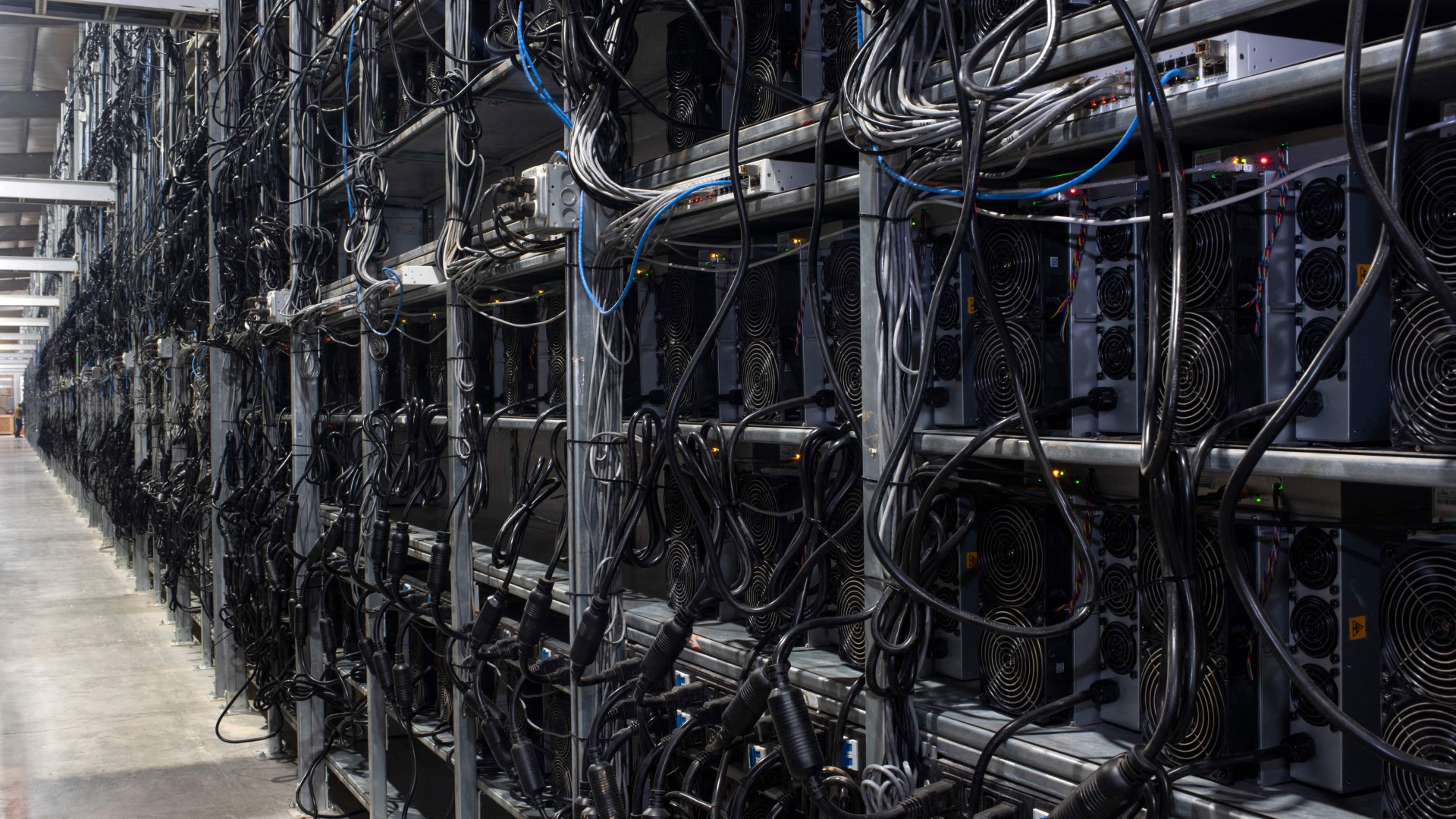Potential health hazards of cryptocurrency mines laid bare by scientists
Anecdotal reports suggest that cryptocurrency mines can have harmful knock-on effects on people's health, but the true scale of the problem is still unknown.

In summer 2024, several news outlets chronicled the "nightmarish" impacts Texas communities endured due to the din of noise emanating from nearby cryptocurrency mines.
Residents of these communities reported that the unrelenting noise caused them to experience a range of ailments, including high blood pressure, chest pain and tinnitus. The noise levels of the cryptocurrency mines allegedly reached 72 decibels — well above the 55 dB limit beyond which the World Health Organization (WHO) deems to be increasingly dangerous for public health.
These recent reports have stoked ongoing discussions about the potential health hazards of cryptocurrency mining. In a thinkpiece published Sept. 26 in the journal JAMA, three scientists argue that we are experiencing a "digital oil boom" that could have serious health consequences for everyone — not only the communities that live near mines. This problem extends beyond noise pollution, encompassing health risks associated with increasing energy consumption and accelerated climate change.
Energy-intensive mines
Cryptocurrency, a virtual currency that harnesses the blockchain, uses a network of computers to report transactions between users, which are documented in a digital ledger. The network is decentralized, meaning that it is not controlled or owned by any one person or group, unlike a traditional central bank, for instance. This structure allows users to transfer currency more quickly and cheaply and with less of a paper trail, compared with traditional banking.
Since its advent, cryptocurrency has experienced several bubbles and crashes — however, it still remains popular worldwide, and the cryptocurrency market has now become a multibillion-dollar industry.
The first and arguably most popular type of cryptocurrency is Bitcoin, which was invented in 2009. Bitcoin relies on something called a "proof-of-work" algorithm, a calculation that essentially verifies the accuracy of transactions added to the digital ledger. The process of completing these calculations is very energy-intensive, and it becomes exponentially more difficult over time.
Sign up for the Live Science daily newsletter now
Get the world’s most fascinating discoveries delivered straight to your inbox.
Consequently, Bitcoin data centers, referred to as "mines," require more and more energy to function over time. In the U.S. alone, cryptocurrency mining is estimated to represent around 0.6% to 2.3% of all electricity consumption in the country.
The energy-hungry industry could raise communities' reliance on peaking power plants, meaning power plants that kick in only at times of peak demand, Mary Willis, co-author of the JAMA article and an assistant professor of epidemiology at Boston University, told Live Science.
The problem is that these plants run on fossil fuels. In terms of their direct impacts, these fumes contain air pollutants that can partly drive diseases, such as stroke, heart disease and lung cancer. Historically disadvantaged racial or ethnic communities are most likely to carry the burden of these health impacts, as plants are often built where those communities live.
Beyond harmful air pollutants, higher demands for fossil fuels also increases the release of greenhouse gases into the atmosphere, thus escalating climate change.

"Crypto mining uses mostly fossil fuel electricity, which comes from coal and natural gas power plants," Benjamin Jones, an associate professor of economics at the University of New Mexico who was not involved in the JAMA article, told Live Science in an email.
"These in-turn generate emissions of CO2 and other air pollutants, which contribute to climate change and harm human health," he said. Such harmful effects include spurring the spread of infectious diseases and the number of deaths tied to extreme weather events, such as heatwaves and major storms.
Blackouts and noise pollution
Another concern is that many cryptocurrency mines are in locations with fragile electrical grids, such as Texas, Willis said. A winter storm in February 2021 caused the states' power grid to fail and highlighted its precarity.
Crypto mines could put additional stress on the grid, exacerbating the risk of blackouts, Willis said. Power outages can have numerous health consequences, including raising the risk of carbon-monoxide poisoning from generators; gastrointestinal illnesses as refrigerators stop working; and deaths in hospitals due to medical equipment shutting down.
On top of these risks related to energy use, cryptocurrency mines can be really noisy. Many communities are extremely worried about this, Willis told Live Science. Exposure to high levels of noise is associated with sleep disturbances, increased blood pressure and heart disease, among other health issues. Excessive noise has also been tied to inflammation in the brain, which may have knock-on impacts in the circulatory system.
For now, many of these health effects are theoretical. Besides anecdotal reports out of places like Texas, there isn't much good data on the health impacts of these mines, Willis said. For starters, there's currently no systematic way to actually track where the mines are located, she said.
In February 2024, the U.S. Energy Information Administration launched a system to track energy consumption from cryptocurrency mines. At the time, the agency said it had identified 137 mines in 21 U.S. states, with Texas, Georgia and New York hosting the majority.
But a month later, this data collection was discontinued following a federal court case initiated by the crypto industry, the JAMA authors wrote. In this case, it was successfully argued that government monitoring would cause "irreparable injury" to the industry.
Without data on the locations and energy use of crypto mines, it will be impossible to fully understand the health implications of cryptocurrency mining, Willis and her co-authors argued.
The trio is now trying to figure out the best way to locate these mines. Only then, they say, might these predictions about the health impacts of the mines be confirmed.
This article is for informational purposes only and is not meant to offer medical advice.
Ever wonder why some people build muscle more easily than others or why freckles come out in the sun? Send us your questions about how the human body works to community@livescience.com with the subject line "Health Desk Q," and you may see your question answered on the website!

Emily is a health news writer based in London, United Kingdom. She holds a bachelor's degree in biology from Durham University and a master's degree in clinical and therapeutic neuroscience from Oxford University. She has worked in science communication, medical writing and as a local news reporter while undertaking NCTJ journalism training with News Associates. In 2018, she was named one of MHP Communications' 30 journalists to watch under 30. (emily.cooke@futurenet.com)









